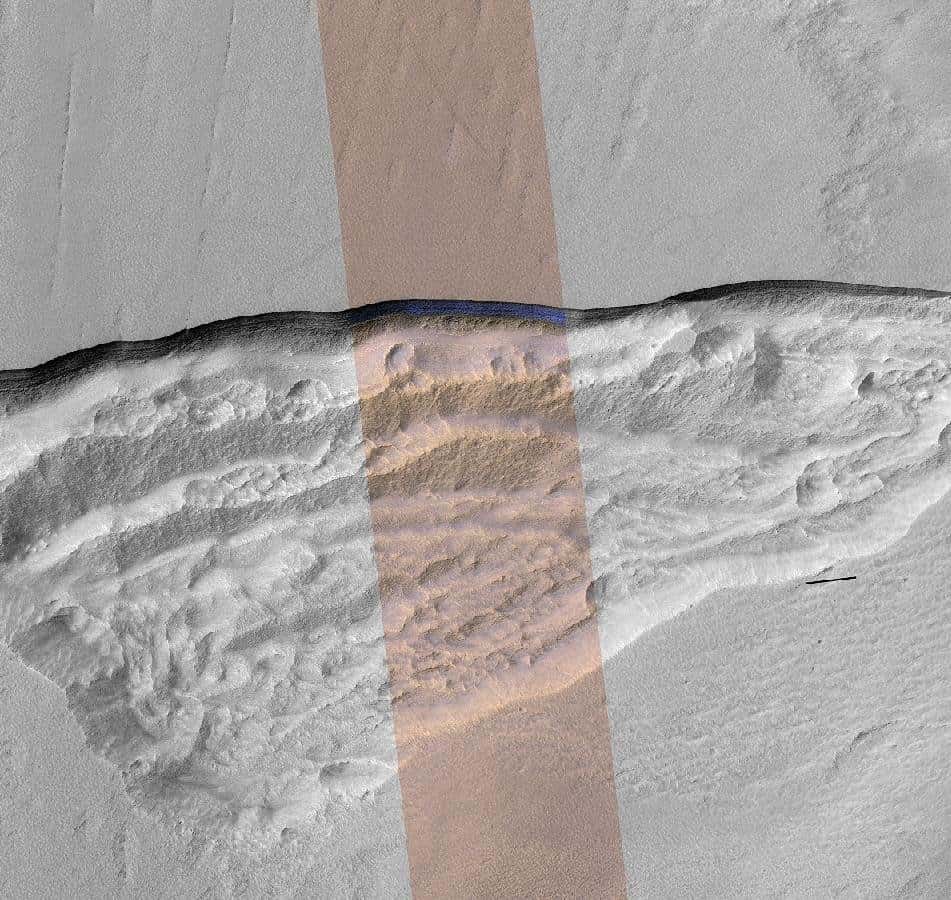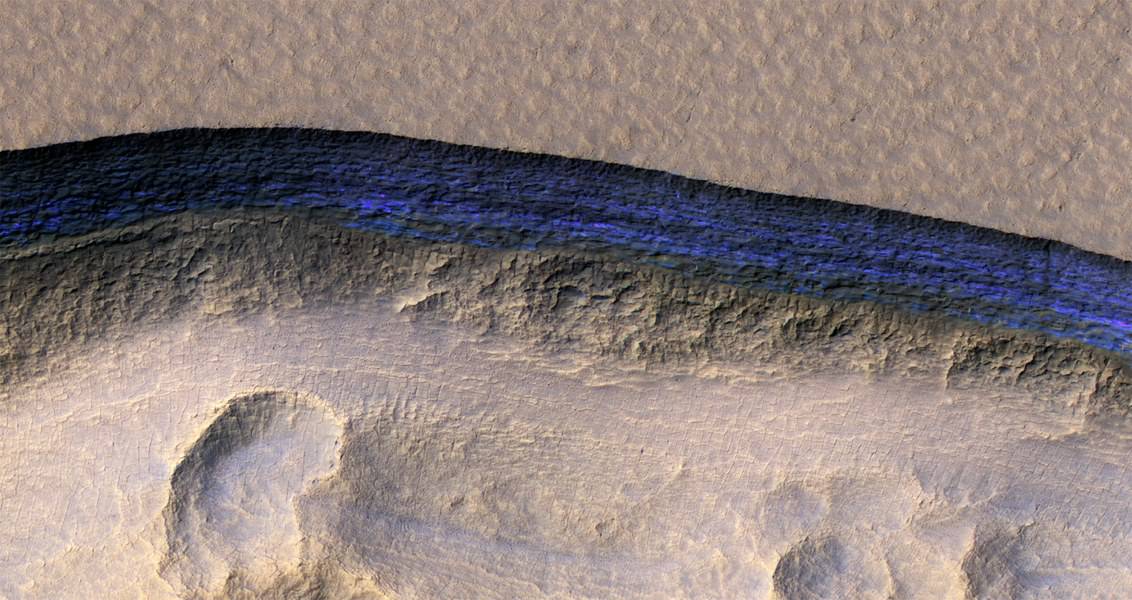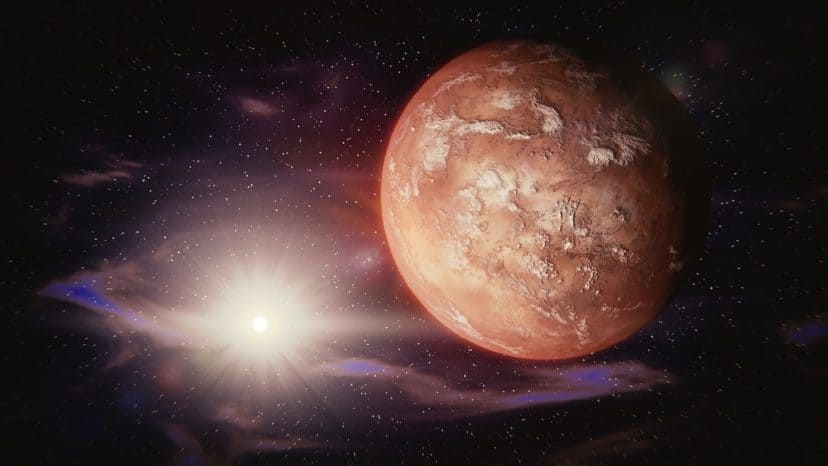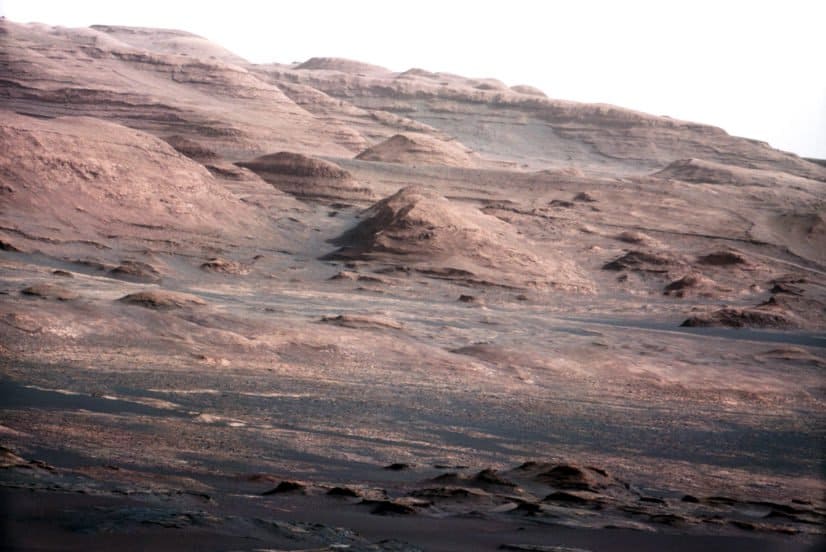
Researchers working with NASA’s Mars Reconnaissance Orbiter (MRO) have discovered eight sites beneath Mars’ surface where there are thick deposits of frozen water.
These 8 sites have steep slopes of over 55 degrees due to which the external layer got eroded over time. This made studying the internal layer of Mars easier for the researchers and also led to the discovery of ice sheets lying underground in Mars’ middle latitudes.

Mars has a layered structure. One of the middle layers was where the snow got collected long ago. Over that is a layer, one or two yards thick, made up of thick ice-cemented rock and dust. This discovery is of immense importance as it also reveals a lot about Mars’ climate history.
The easier availability of clean water on Mars will have a great effect on future robotic or even human exploration missions over there.

The ice appeared on the steep scarps that appear bright blue in the High-Resolution Imaging Science Experiment (HiRISE) camera on NASA’s MRO. The camera captured a 550 meters wide area. The elevation of slopes is about 130 meters higher than the ground and exposes over 80 vertical meters of water ice.
The lead author of the study, Colin Dundas, U.S. Geological Survey’s Astrogeology Science Center, says “There is shallow ground ice under roughly a third of the Martian surface, which records the recent history of Mars. What we’ve seen here are cross-sections through the ice that give us a 3-D view with more detail than ever before.”
The frozen ice lying underground was previously detected with the spectrometers on MRO orbiter but couldn’t be confirmed.

Scientists have yet not come to a conclusion how these scarps were actually formed. But they did say that once a scarp erodes and becomes exposed to the atmosphere, it tends to retreat and grow wider and taller. the Odyssey’s Thermal Emission Imaging System (THEMIS) helped researchers determine that the bright material is not just a thin frost layer but a whole lot of frozen ice lying beneath. This means that astronauts can now go there with just a bucket and a shovel to get water for all their needs, as said by Byrne.
The exposed ice is not just a potential resource, it has a scientific value too as it is a great evidence of the long-term climate pattern of Mars.

A lot of mysteries about this frozen ice is yet to be uncovered. Leslie Tamppari said that we need to find what happens to this water over time: Where does it go? When does ice accumulate? When does it recede?
The observations will continue and it is very much possible that future missions to the surface could seek additional information.



